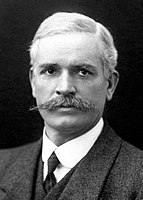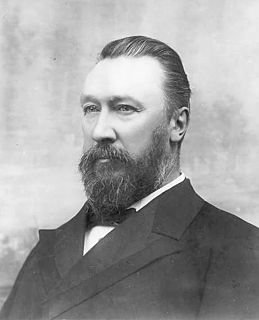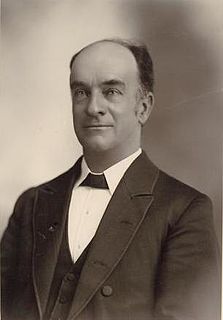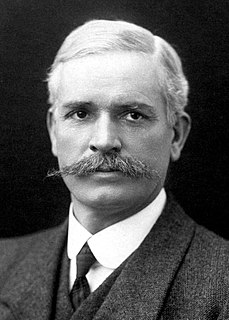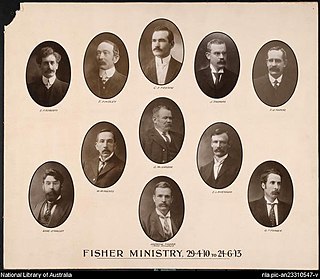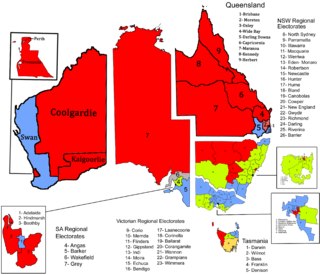| ||||||||||||||||||||||||||||||||||
All 75 seats in the House of Representatives 38 seats were needed for a majority in the House 18 (of the 36) seats in the Senate | ||||||||||||||||||||||||||||||||||
|---|---|---|---|---|---|---|---|---|---|---|---|---|---|---|---|---|---|---|---|---|---|---|---|---|---|---|---|---|---|---|---|---|---|---|
| ||||||||||||||||||||||||||||||||||
| ||||||||||||||||||||||||||||||||||
Federal elections were held in Australia on 13 April 1910. All 75 seats in the House of Representatives, and 18 of the 36 seats in the Senate were up for election. The incumbent Commonwealth Liberal Party (the result of a merger between the Protectionist Party and the Anti-Socialist Party) led by Prime Minister Alfred Deakin was defeated by the opposition Labour Party, led by Andrew Fisher.

Elections in Australia take place periodically to elect the legislature of the Commonwealth of Australia, as well as for each Australian state and territory. Elections in all jurisdictions follow similar principles, though there are minor variations between them. The elections for the Australian Parliament are held under the federal electoral system, which is uniform throughout the country, and the elections for state and territory Parliaments are held under the electoral system of each state and territory.

Australia, officially the Commonwealth of Australia, is a sovereign country comprising the mainland of the Australian continent, the island of Tasmania and numerous smaller islands. It is the largest country in Oceania and the world's sixth-largest country by total area. The neighbouring countries are Papua New Guinea, Indonesia and East Timor to the north; the Solomon Islands and Vanuatu to the north-east; and New Zealand to the south-east. The population of 25 million is highly urbanised and heavily concentrated on the eastern seaboard. Australia's capital is Canberra, and its largest city is Sydney. The country's other major metropolitan areas are Melbourne, Brisbane, Perth and Adelaide.

The House of Representatives is the lower house of the bicameral Parliament of Australia, the upper house being the Senate. Its composition and powers are established in Chapter I of the Constitution of Australia.
Contents
- Results
- House of Representatives
- Senate
- Seats changing hands
- Post-election pendulum
- See also
- Notes
- References
The election represented a number of firsts: it was Australia's first elected federal majority government; Australia's first elected Senate majority; the world's first Labour Party majority government at a national level; after the 1904 Chris Watson minority government the world's second Labour Party government at a national level; the first time it controlled both houses of a bicameral legislature and the first time that a prime minister, in this case Deakin, got voted out in an election. It also remains the only election in Australia's federal history to have occurred following expiration of a full three-year parliamentary term by the 'effluxion of time'. [1]
A majority government refers to one or multiple governing parties that hold an absolute majority of seats in legislature. This is as opposed to a minority government, where the largest party in a legislature only has a plurality of seats.

The Senate is the upper house of the bicameral Parliament of Australia, the lower house being the House of Representatives. The composition and powers of the Senate are established in Chapter I of the Constitution of Australia. There are a total of 76 Senators: 12 are elected from each of the six states regardless of population and 2 from each of the two autonomous internal territories. Senators are popularly elected under the single transferable vote system of proportional representation.

John Christian Watson, commonly known as Chris Watson, was an Australian politician who served as the third Prime Minister of Australia. He was the first Prime Minister from the Australian Labour Party, and led the world's first Labour Party government, indeed the world's first socialist or social democratic government, at a national level. From paternal German and maternal British ancestry, he is the only Australian Prime Minister not born in a Commonwealth country.
Two referendums to approve proposed amendments to the Constitution were held on the same day. The State Debts referendum was carried, but the Surplus Revenue referendum was not carried.

Referendums in Australia are polls held in Australia to approve parliament-proposed changes to the Constitution of Australia or to the constitutions of states and territories. Polls conducted on non-constitutional issues are usually referred to as plebiscites.

The Constitution of Australia is the supreme law under which the government of the Commonwealth of Australia operates, including its relationship to the States of Australia. It consists of several documents. The most important is the Constitution of the Commonwealth of Australia, which is referred to as the "Constitution" in the remainder of this article. The Constitution was approved in a series of referendums held over 1898–1900 by the people of the Australian colonies, and the approved draft was enacted as a section of the Commonwealth of Australia Constitution Act 1900 (Imp), an Act of the Parliament of the United Kingdom.
Future Prime Minister James Scullin and future opposition leader Matthew Charlton both entered parliament at this election. Scullin lost his seat at the subsequent 1913 election and did not re-enter parliament until 1922.
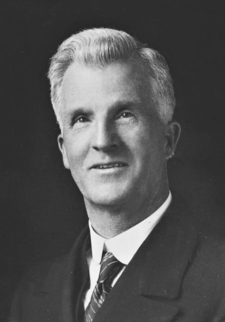
James Henry Scullin was an Australian Labor Party politician and the ninth Prime Minister of Australia. Scullin led Labor to government at the 1929 election. The Wall Street Crash of 1929 transpired just two days after his swearing in, which would herald the beginning of the Great Depression in Australia. Scullin's administration would soon be overwhelmed by the economic crisis, with interpersonal and policy disagreements causing a three-way split of his party that would bring down the government in late 1931. Despite his chaotic term of office, Scullin remained a leading figure in the Labor movement throughout his lifetime, and served as an éminence grise in various capacities for the party until his retirement in 1949.

Matthew Charlton was an Australian politician who served as leader of the Labor Party from 1922 to 1928. He led the party to defeat at the 1922 and 1925 federal elections.
